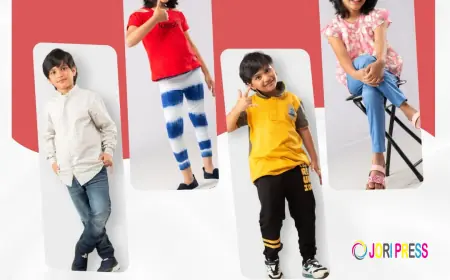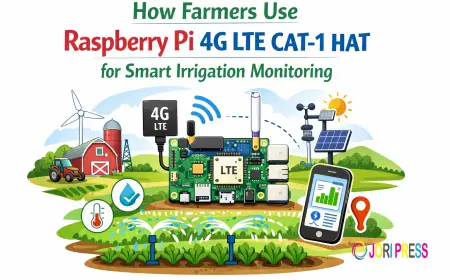The Power of Influencer Marketing: How Brands Win Big Online
In today’s digital-first world, traditional advertising is losing its grip—and influencer marketing is stepping up to take the lead. From Instagram reels to YouTube unboxings, content creators are redefining how brands connect with their audiences. What was once seen as a trend is now a key pillar in every forward-thinking brand’s marketing strategy.

In today’s digital-first world, traditional advertising is losing its grip—and influencer marketing is stepping up to take the lead. From Instagram reels to YouTube unboxings, content creators are redefining how brands connect with their audiences. What was once seen as a trend is now a key pillar in every forward-thinking brand’s marketing strategy.
So, what makes influencer marketing so powerful? Why are brands—big and small—investing heavily in creator-led campaigns? Let’s explore how brands are using influencer marketing to win big online. Explore the Website
What is Influencer Marketing?
Influencer marketing is a form of social media promotion where brands collaborate with individuals—called influencers—who have built a loyal, engaged following. These influencers create content to promote products, services, or brand messages to their audience in an authentic, relatable way.
Unlike ads that feel like interruptions, influencer content blends seamlessly into followers’ feeds—making the message more trusted and less intrusive.
Why Influencer Marketing Works
1. Trust and Authenticity
Today’s consumers are tired of being sold to. They don’t trust banner ads or celebrity endorsements as much as they used to. But they do trust influencers—because they follow them for their opinions, experiences, and personalities.
Influencers act like friends giving product recommendations. This authenticity leads to better engagement, stronger brand recall, and higher conversions.
? Stat: 61% of consumers trust influencer recommendations more than brand-created content. (Source: Edelman Trust Barometer)
2. Laser-Focused Targeting
From fashionistas to fitness buffs, tech geeks to pet lovers—there’s an influencer for every niche. This allows brands to tap into highly targeted audiences that are already interested in their industry.
Instead of broadcasting to a broad (and often uninterested) audience, influencer marketing ensures that your message reaches people who are more likely to act.
3. Content That Converts
Influencers are content creators at heart. They know how to tell stories, shoot engaging videos, and drive conversations. The content they create is often more impactful than traditional ad creatives.
Many brands now repurpose influencer content across their own marketing channels—saving on production costs while boosting social proof.
How Brands Are Winning with Influencer Marketing
1. Launching Products with Buzz
Influencer marketing is a powerful tool for launching new products. By working with creators to unveil a product through unboxing videos, reviews, or first impressions, brands can generate massive hype.
? Example: D2C beauty brands in India often rely on micro-influencers to create “first look” reels that lead to early sales and waitlists.
2. Driving E-commerce Sales
With shopping features built into platforms like Instagram and YouTube, influencer marketing is now a direct path to sales. Creators can tag products, share discount codes, and drive followers to a brand’s website or app instantly.
? Bonus Tip: Partnering with influencers on affiliate models or performance-based campaigns can help maximize ROI.
3. Building Long-Term Brand Loyalty
Many brands now move beyond one-off influencer posts to long-term ambassador programs. These ongoing partnerships feel more genuine and help influencers evolve into brand advocates—increasing both loyalty and lifetime customer value.
?️ Pro Tip: Consistency beats virality. Brands that win big don’t chase trends—they build relationships.
Key Trends in Influencer Marketing (2025 & Beyond)
✅ Rise of Nano and Micro Influencers
Smaller creators (1K–100K followers) often outperform celebrities when it comes to engagement and cost-effectiveness. They bring niche reach and higher trust.
✅ Short-Form Video is King
Instagram Reels, YouTube Shorts, and TikTok dominate. Creators who excel at storytelling in 15–60 seconds are in high demand.
✅ Data-Driven Campaigns
Modern influencer marketing isn't just about likes. Brands use analytics tools to track reach, impressions, conversions, and ROI.
✅ Creator-Led Brand Collaborations
Influencers are now co-creating product lines, launching limited editions, and shaping brand identity. Think beyond promotion—think partnership.
Getting Started with Influencer Marketing
If you're ready to explore influencer marketing for your brand, here’s a simple 5-step plan:
-
Define Your Goals – Awareness? Engagement? Sales?
-
Choose the Right Platform – Instagram for visuals, YouTube for deep dives, LinkedIn for B2B, etc.
-
Find the Right Influencers – Use influencer platforms or agencies to vet creators by relevance, reach, and authenticity.
-
Create a Clear Brief – Outline deliverables, tone, timelines, and expectations.
-
Track and Optimize – Use UTM links, discount codes, and analytics to measure results.
If you’re not sure where to start, consider working with a trusted influencer marketing agency. They’ll help you strategize, source creators, manage campaigns, and deliver measurable results.
Final Thoughts
Influencer marketing has evolved into one of the most effective tools in a brand’s digital arsenal. It combines trust, creativity, and reach—making it the ultimate connector between brands and modern consumers.
Whether you're a startup or an established brand, investing in influencer marketing is no longer optional—it's essential.
What's Your Reaction?
 Like
0
Like
0
 Dislike
0
Dislike
0
 Love
0
Love
0
 Funny
0
Funny
0
 Angry
0
Angry
0
 Sad
0
Sad
0
 Wow
0
Wow
0



















































